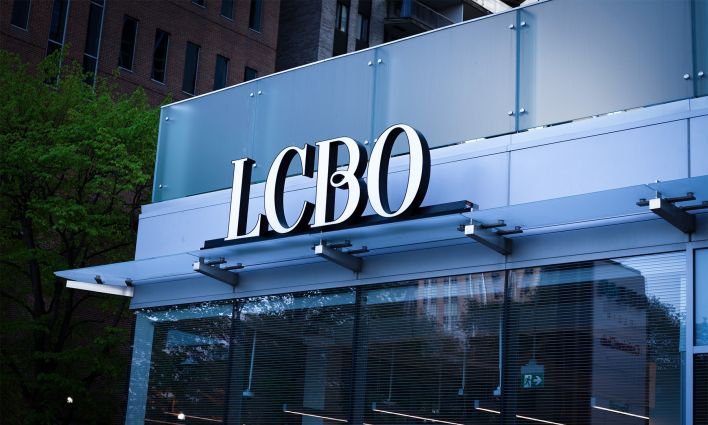As classes across the province come to an end, it is time to take stock of Ontario’s approach to public education over the past year. Evidence suggests that the Ontario government’s plan for the 2020-21 COVID-19 school year failed to take into account students’ differential needs and experiences—exacerbating race and ability-based inequities and potentially inducing long-term impacts on students’ educational outcomes.
Race-based data from Toronto Public Health has consistently found that COVID-19 cases and hospitalizations are more prevalent among neighbourhoods with higher proportions of low-income earners and immigrants.
Approximately 74% of people who contracted a COVID-19 infection identify as belonging to a racialized group. Black, Arab, Middle Eastern, and South Asian people are particularly over-represented in the total number of cases. While Black people make up 9% of Toronto’s population, they represent 13% of the city’s COVID-19 cases and 15% of hospitalizations.
Those from lower-income households have been similarly impacted: more than 50% of COVID-19 cases in the Greater Toronto Area (GTA) have been among families with an annual household income of $50,000 and lower—even though they represent only 30% of Toronto’s population.
The higher incidence of the disease in marginalized communities can largely be attributed to inequities related to socioeconomic status. Financial insecurity, working conditions, the lack of paid sick days and inadequate housing conditions all have implications on an individual’s risk of exposure to COVID-19. These factors also play a large role in determining educational outcomes as they influence students’ mental health, access to resources, and school participation.
Pre-pandemic research has consistently shown that income level and standardized test scores are correlated in Ontario. On average, elementary school students in high-income areas perform better on reading, math, and writing tests compared to those in low-income areas.
Income inequality is particularly stark in Toronto. A study of 2016 Canadian census data revealed that racial and income segregation in Toronto is significant: 68% of residents in neighbourhoods with average individual income of $32,000 are racialized, while 72% of residents in neighbourhoods with average individual income of $102,000 are white.
Chronic underfunding of Ontario public schools and cuts by the current government contribute to educational inequality in Toronto. In 2019, Toronto District School Board was forced to implement $67.8 million in cuts by laying off staff, reducing student support services, and cutting before-and-after school programming. These cuts to public education disproportionately impact lower-income students, who cannot afford privately offered alternatives, and set the stage for the pandemic’s devastating impact on children from marginalized communities.
Pre-pandemic research has consistently shown that income level and standardized test scores are correlated in Ontario. On average, elementary school students in high-income areas perform better on reading, math, and writing tests compared to those in low-income areas.
Since the beginning of the pandemic, the Ontario government’s decision to give families the option between online learning and in-class instruction has worked to widen existing disparities in academic achievement. Data analysis by The Globe & Mail of four school boards in Ontario—Peel District, Toronto District, York Region, and Hamilton-Wentworth—revealed that in-class learning rates were the lowest in schools located in the most racialized communities. The numbers were particularly stark in Brampton, where just 56% of elementary school students returned to classrooms, substantially less than the 83% of returning students in Hamilton.
Factors such as high positivity rates and challenges associated with getting to school contributed to parents’ decisions to opt for online learning in these communities. Brampton’s northeast corner, for example, had a shocking 19% COVID-19 test positivity rate, the highest on a list of 30 GTA neighbourhoods that saw a drastic increase of people testing positive for the virus last fall and again this spring.
It is common for families in highly racialized communities, such as Brampton, to live in multigenerational households. Sending children to school poses a greater risk of transmission for elderly grandparents, who are more vulnerable to infection. Additionally, Brampton is home to a comparatively higher proportion of racialized immigrants and is densely populated with essential workers working low-income jobs in the manufacturing sector. Parents in other areas, such as east Toronto, have described being deterred from sending their children to school due to concerns over community transmission of COVID-19 in cramped apartment building elevators and long commutes on public transit.
Data analysis by The Globe & Mail of four school boards in Ontario—Peel District, Toronto District, York Region, and Hamilton-Wentworth—revealed that in-class learning rates were the lowest in schools located in the most racialized communities.
Gaps in access to educational resources and supports for out-of-school learning was another important factor compounding existing educational inequality this past year. Wealthy parents across the GTA turned to private “learning pods” to supplement their children’s virtual education. Tutoring centres, such as The Etobicoke Learning Lab, charge up to $79 an hour for pods consisting of three to five children. They offer a range of services to help guide students through their online learning experience, including providing additional lessons and assignments.
The increased use of private services to supplement online education continues to be concerning because it is not accessible to lower-income households and it bleeds critical resources from the public system.
Students without supplementary academic support have struggled to maintain their learning in new unfamiliar remote learning environments. New research shows that students without access to learning resources or family support are experiencing large losses in skills and knowledge. The COVID-19 science table estimates that Ontario students, on average, are potentially up to 3 months behind where they should have been academically if in-person learning had not been shut down. Among marginalized students, the gaps are likely to be much larger.
Remote learning has also been difficult for students who require instructional modifications and accommodations. Online learning is not a viable option for many parents who have children with disabilities since they often need special resources and/or individual attention from trained educators or therapists.
According to provincial figures, the proportion of students using special education services for various forms of disabilities is between 10 to 20% of total student enrolment. Access to supports, such as speech-language therapy and occupational therapy, varies greatly according to individual needs as well as the availability and type of services offered in schools.
Although Ontario allocated $22.5 million for special education supports during the 2020-21 school year, there are questions about how the funds were used. Parents and educators state that resources were spread too thin and that school boards did not receive enough to accommodate students’ needs.
The pressure of underfunding was felt by special-education teachers, who were expected to teach in class and online at the same time, despite the diverse and unique needs of their students.
Following an increase in COVID-19 cases in December 2020, the Ontario government announced a delay in resuming in-person classes for elementary schools until January 11, 2021. School boards were permitted to keep special education classes open for in-person learning and had the ability to decide which students would be allowed to return. However, while the Ministry of Education claimed that the return to school for students with disabilities would come with “strong health and safety measures,” a number of teachers reported that risks remained for teachers and immunocompromised students since no additional COVID-19 measures were implemented.
The pressure of underfunding was felt by special-education teachers, who were expected to teach in class and online at the same time, despite the diverse and unique needs of their students.
This spring, the government began its three-phase reopening, with patios and non-essential retail being permitted to re-open at limited capacity while schools remain closed to in-person learning until September 2021. This decision was met with heavy criticism from experts and advocates alike. In a letter addressed to Premier Doug Ford, a group of over 400 doctors charge that the government ignored their advice to prioritize schools in their re-opening plan and should have allowed local health experts to make regionally based decisions on the return to in-person learning.
Growing international and local evidence reveals that education disruption through long-term school closures may have lasting consequences on the academic outcome and mental health of students. Preliminary Canadian data shows that the lack of in-person learning, along with barriers to remote education, have decreased student engagement and caused months of social isolation and learning loss. This has contributed to an increase in mental health issues, including anxiety, depression, and eating disorders. Racialized groups, newcomers, and Indigenous peoples, who are over-represented among low-income households, are more vulnerable to these effects.
Over the past year, the COVID-19 pandemic has undeniably illuminated and amplified inequalities within an education system that already underserves and poses challenges for students from low-income, racialized families, and/or students with disabilities. The current crisis presents an opportunity to completely re-imagine education and schooling so that it values the interests and needs of all communities, based on their lived experiences.
In order to make informed decisions, there will be a need for ongoing research on a school-board level to assess learning losses and develop an equity strategy based on how race, class, and disability intersect and influence educational outcomes.
In the short term, funding public education is going to be critical for successful post-pandemic recovery in Ontario.
Despite claims from the Ontario government that it made historic levels of investment in education before and during the pandemic, data reveals the opposite is true. Analysis by the Canadian Centre for Policy Alternatives (CCPA) shows that the majority of pandemic funding for Ontario schools came from the federal government and school board reserves.
According to a review of Ontario’s spending plans in the 2021 provincial budget by the Financial Accountability Office (FAO), Ontario is set to make further cuts to the province’s education budget. Ontario’s average annual spending increase for education is slated to be 1.2%, reaching a peak of $35.7 billion in 2029-30. The FAO estimates that in order to maintain current public school programs and commitments, the budget needs to increase by at least 2% annually, reaching $38.7 billion in 2029-30. This discrepancy amounts to an enormous $2.9 billion shortfall over the next decade.
Cuts to education will have severe and long-lasting implications for students and staff, with thousands of education workers now facing layoffs. While the Ministry of Education has stated that it is supporting parents through selected cash transfers—at a cost of over $1 billion—this money should have been directly invested in public schools to increase capacity of mental health services, to hire more teachers and staff to lower class sizes, to support the expansion of extra-curricular programming, and to invest in targeted resources for students whose families have been impacted by COVID-19.
Without an increase in funding to provide these critical resources and supports, marginalized students in Ontario’s public education system will continue to be left behind.








